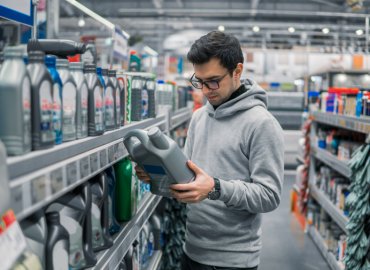
Consumers continued to trade up to higher priced synthetic motor oil in place of cheaper conventional oil, and inflation caused transmission fluid prices to increase, NPD Group concluded, based on tracking of U.S. automotive aftermarket industry sales in 2017.
Nathan Shipley, executive director and automotive industry analyst for NPD, noted two primary factors for the switch towards synthetics. “Many new cars today require a full synthetic oil, and consumers are forced to trade up,” Shipley told Lube Report. “The second reason is that the price gap between conventional and synthetic has narrowed so much over the years that consumers find it easier to trade up to a better quality product.”
NPD noted a significant increase in overall average selling price of aftermarket products in 2017. This includes but is not limited to automotive lubricants, such as motor oils and transmission fluids. The average price grew 2 percentage points compared to 2016, and this was influenced by a few different pricing factors, NPD said in a news release.
Overall U.S. automotive aftermarket industry sales grew 2.2 percent in 2017, according to the NPD Group/Retail Tracking Service findings for the 52 weeks ending Dec. 30, 2017. Growth was driven by a 3.3 percent increase in average selling price, as unit sales declined by 1.1 percent.
NPD said other larger macro trends impacting the automotive aftermarket in 2017 included changes in miles driven, the emergence of e-commerce, and extreme weathers positive impact on aftermarket sales.
The miles driven growth rate decelerated in 2017. With miles driven trending upward at a healthy clip of 2.6 percent in 2016, the aftermarket grew its sales by nearly 3 percent, NPD said in a news release. In 2017, the growth rate for miles driven decreased to 1.2 percent, slowing the aftermarkets growth along with it.
Miles driven was a big factor in creating a healthy environment for the aftermarket industry in 2015 and 2016, Shipley said in a news release. This slowdown has been a headwind for the industry in 2017. However, I expect the rate to stabilize in 2018, which will be a nice tailwind for the aftermarket and positively impact its outlook for this year. My expectation is that both miles driven and average selling prices will strike their balance in 2018, bringing the aftermarkets growth to about 2.7 percent for the year.
Shipley said he believes the U.S. market is no longer seeing increases in miles driven due to gasoline prices coming down – starting in late 2014 – and that the country is entering a period of a stable miles-driven environment, meaning we are no longer riding the wave of gas prices coming down, translating to consumers driving more.
E-commerce is also impacting the industry, the firm noted, despite it being one of the lowest e-commerce penetrated industries tracked by NPD. The aftermarkets online penetration rate has doubled in the last three years, from 7 percent in 2014s fourth quarter to 14 percent in 2017.
A slow migration to e-commerce for automotive products will be one of the most talked about topics in our industry in 2018, Shipley said. As the online channel chips away at brick and mortar, manufacturers and retailers alike will continue to find new ways to compete in this space, most notably in enabling customers to buy online and then pick up their purchased products at a local store. He noted that based on its research, NPD has found in general that automotive fluids have the lowest e-commerce penetration for the aftermarket industry, relative to other higher-penetrated categories such as accessories and hard parts.